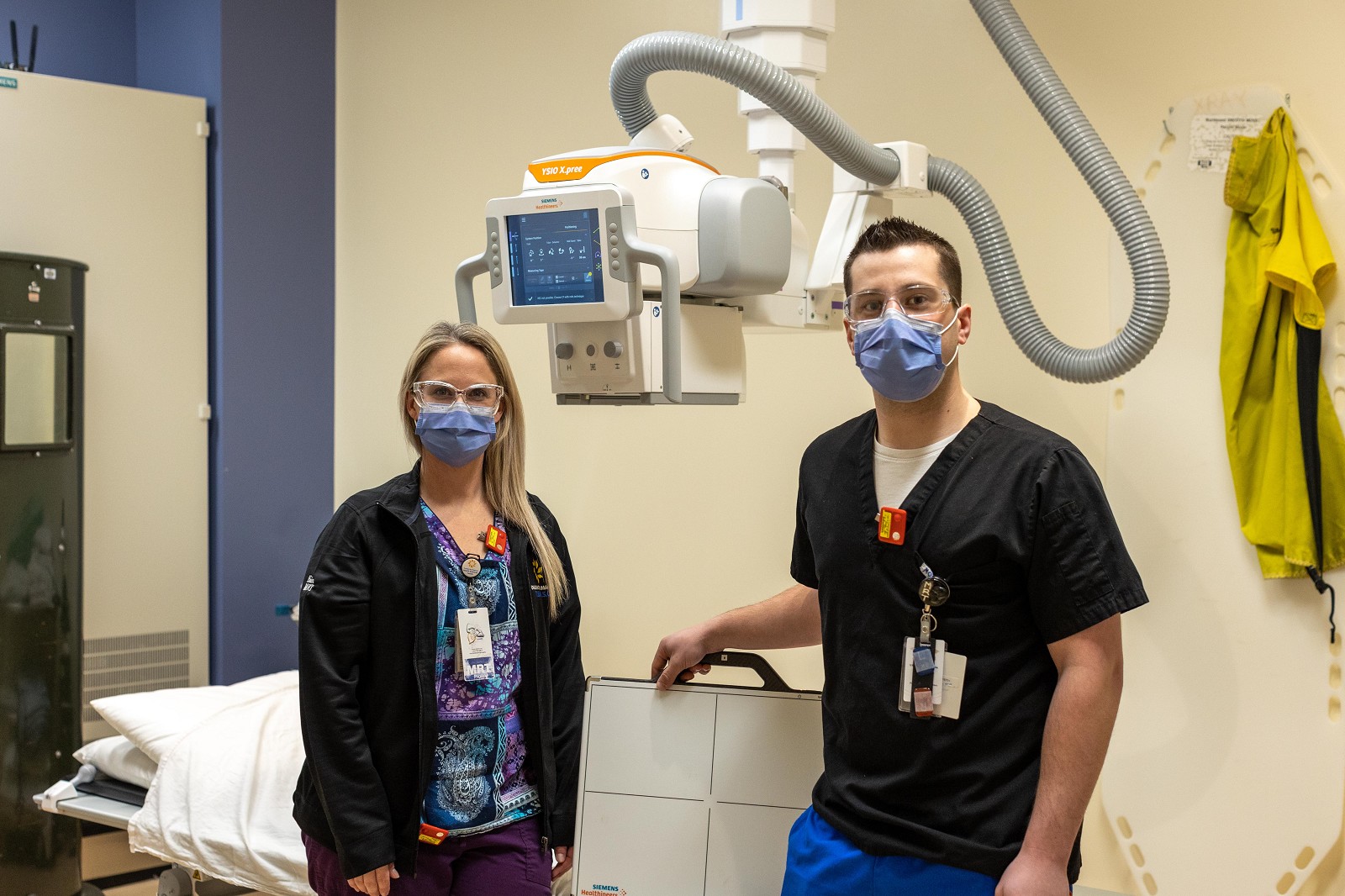A new X-Ray machine and dedicated MRTs mean better patient care in the Fracture Clinic
Published Tuesday, May 24, 2022

Thanks to our generous donors, patient care at the Thunder Bay Regional Health Sciences Centre’s Fracture Clinic got a huge boost this winter with the installation of a brand new X-ray unit. The old unit, which is original to our Hospital when it opened in 2004, was aging and in desperate need of replacement. Without onsite X-rays, patients would have to go all the way down to Diagnostic Imaging (DI).
“Many patients are on crutches or in wheelchairs, so that long trip down the hallway would be difficult,” said Mitchell Barr, one of the Medical Radiation Technologists (MRTs) at the Fracture Clinic.
“Everyone who comes here has mobility issues or an injury – that’s why they’re here,” said Erin Arps, another MRT at the clinic. “That long walk can be hard on them.”
Having expert MRTs like Erin and Mitchell within the Fracture Clinic is as important as having the unit itself.
MRTs play a vital role in each patient’s X-ray. First, MRTs are trained medical professionals who ensure the X-ray images are clear and accurate. This involves a lot of patient interaction, assisting those with mobility issues and helping get them into position.
But MRTs also provide vital clinical support for physicians assessing those X-rays.
“Having a skilled MRT working right here in the Fracture Clinic enables collaborative practice as doctors diagnose, treat, and follow up that much faster,” said Erin. Fracture Clinic doctors wouldn’t have that support at hand if patients always went to DI.
The new unit itself is a huge advancement in patient care. For one thing, the physical operation of the unit makes it easier on the patient. The X-ray table lowers farther than ever to make it easier for patients with mobility issues to get onto the table. In some cases, the table isn’t need at all.
“We can actually remove the X-ray detector and put it under their stretcher or wheelchair for some types of images, so it saves them from even having to get onto the X-ray table,” Mitchell said.
This and other functionality also helps prevent MRT injury when helping patients, making X-rays safer for both patients and staff.
“The unit can move itself into position, so that’s less wear and tear on our bodies, too,” Erin said.
Auto-positioning is thanks to the built-in artificial intelligence (AI) system, which also helps with the scans themselves. For example, the unit can detect the size of the body part to be X-rayed and “adapt” radiation levels accordingly. That way, smaller body parts – such as the wrist of a child – automatically receive lower doses of radiation. The AI also helps with decision support during imaging, all completely controlled by the skilled MRTs.
All in all, the new unit helps our MRTs provide better patient care to everyone visiting the Fracture Clinic.
“We are so thankful for the donors who are helping the MRTs provide better patient care,” Erin said. “We can now provide our patients with more adaptable X-rays at lower radiation doses. We couldn’t do it without you.”